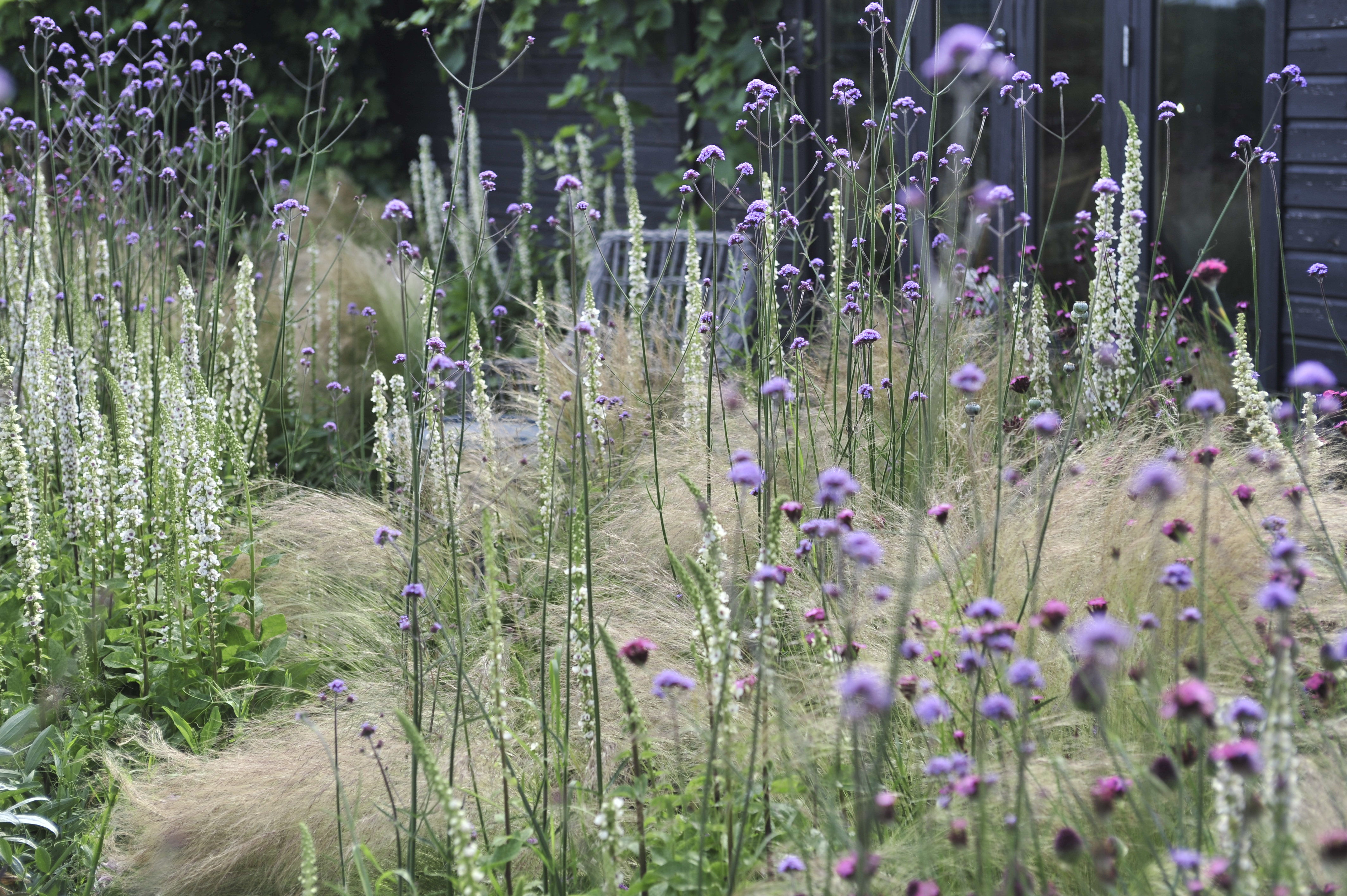Lessons Learned: The Gravel Garden that (Almost) Looks After Itself

Photography by Clare Coulson.
In the summer of 2017, I planted a gravel garden along a scrappy stretch of land that edged a recently renovated studio.
Stipa tenuissima is the star plant in the garden, acting as a tactile and shimmering base for the spires of verbascum and verbena to move through.
I signed up for the excellent gravel garden study day at Beth Chatto’s garden in Essex, which was a step by step with David Ward (he worked with Beth when she created her famed gravel garden in the 1980s).
Dianthus carthusianorum is the perfect dry garden plant; from a low mound of fine leaves, it sends up leggy stems topped with hot pink flowers.
Others, including and Eryngium giganteum, I found much more tricky from seed but they were brilliant self seeders; from a couple of verbena plants, there is now a self-seeded verbena forest in high summer of hundreds of plants that have just placed themselves in any available crack.
Considering a garden from inside a house or building is crucial, creating vistas and sightlines from the place where you might sit and look out. And the garden has really evolved to be a garden of self-seeders.
When the grasses here, which include Stipa gigantea and Calamagrostis x acutiflora ‘Karl Foester’ and especially the Stipa tenuissima, move gently on the breeze, it becomes a mesmerizing highly, tactile space.
It’s all about contrast.
Into autumn the garden starts to look more muted but it continues to hold its own. At this point Stipa tenuissima can start to become weighed down with its growth; I cut it back, leaving just a few inches of growth and it will start to grow new foliage.